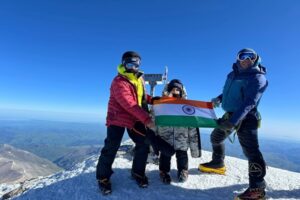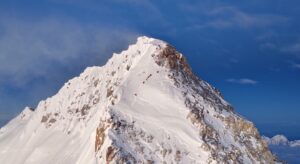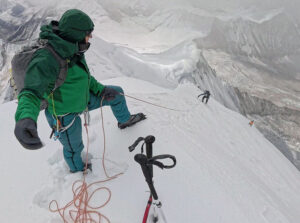“Nepal Building a Highway to Everest”. The headline that appeared earlier this week in the Nepali Times has stirred controversy among trekkers and environmentalists. Is the Khumbu Valley in actual danger? Will the road bring heavy traffic and pollution? Are we talking about a sort of Karakorum Highway piercing rural Nepal, or even something like the “tarmac scar” that crosses the Tibetan Plateau to the Rongbuk monastery, at the foot of Everest’s Tibetan side?
On closer scrutiny, the project is not as outrageous as it initially seems, especially for those who live there all year.
First, the road does not intend to run all the way to Base Camp, nor even enter Sagarmatha National Park. Its goal is to link Lukla with the rest of the country. There is already a 277km road from Kathmandu to the town of Phaplu, in the SoloKhumbu District. The new road adds another 77km to the village of Chaurikharka, just below Lukla.
Second, the new road is not new after all. The project has been ongoing for the last six years. The 2015 earthquake, rough weather and lack of funds have simply delayed it. Originally, Sherpa leaders in the Khumbu Rural Municipality lobbied for the road, hoping that it would improve the transportation of supplies to the valley and reduce the costs to those isolated villages on the Everest trail.
Nepal tagged the road as high priority, meaning that work on it can continue even during the pandemic, in order to complete it by the end of 2022. But financial shortfalls have slowed down the last bit of paving, and the final 24km remains a dirt track.

The notion of “highway” differs from one country to another. The road from Kathmandu to Phaplu is sometimes considered the most dangerous road in the world.
Some locals are concerned that the road, which passes near the park boundaries at Surke, may damage natural areas. But they also understand that it’s a necessary step in this tourism-dependent region, and their demands focus on how to combine economy and ecology.
For climbers and trekkers, the road should not have much impact. Foreign tourists rarely opt for the 14-hour drive. Almost eevryone takes the half-hour flight from KTM to Lukla, not to mention the high-end expedition clients who prefer to be airlifted all the way to Base Camp by helicopter. However, the road can provide a suitable Plan B for when bad weather closes the Lukla airstrip. An easier influx of supplies may also lead to better (and cheaper) products and services for both visitors and residents.






